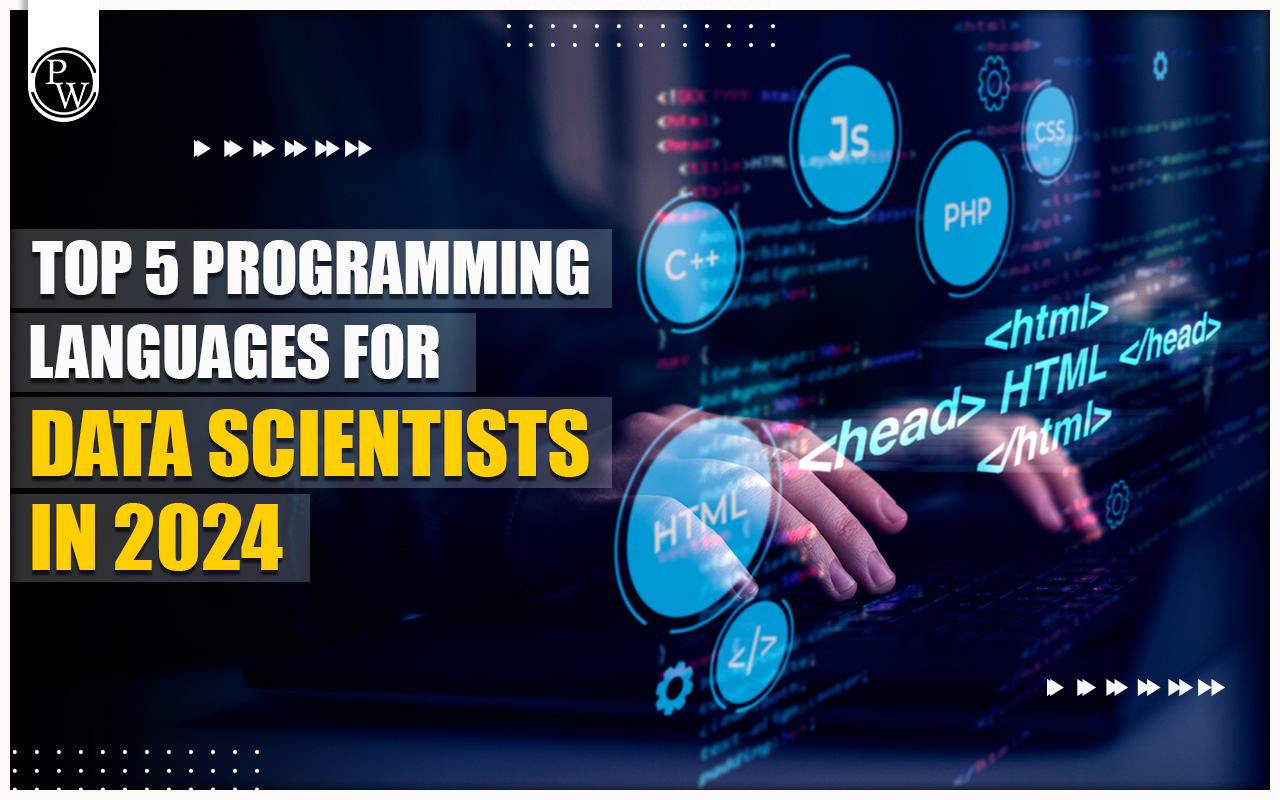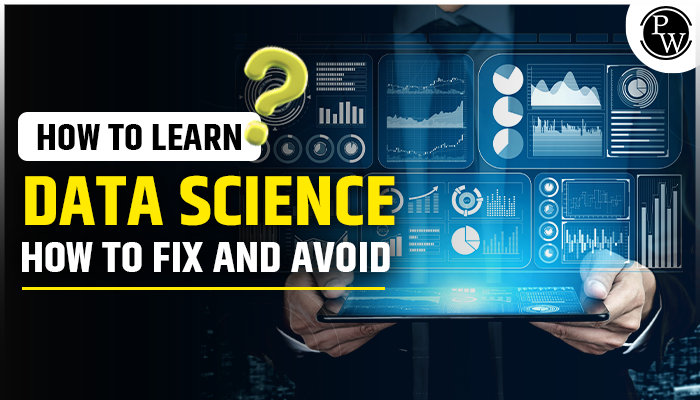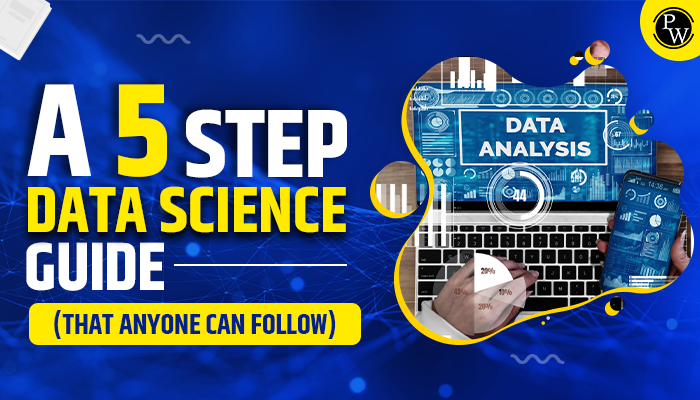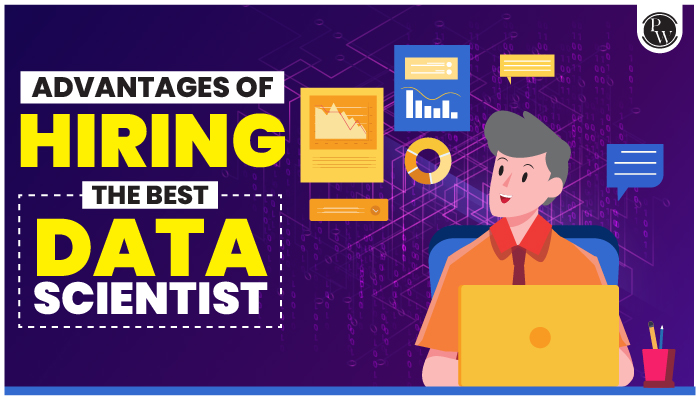Data Science Programming Languages: In the realm of data science, where every bite of information holds the potential for ground-breaking insights, the choice of programming language becomes a compass guiding professionals through the field of data analytics.
As we stand on the cusp of 2024, the demand for data scientists continues to surge, and the narrative of data-driven decision-making takes centre stage. In this blog, we’ll talk about the most used data science programming languages in 2024, and much more!
If you want to make a successful career in data science, a Full-Stack Data Science course is highly ideal for you!
Top 5 Data Science Programming Languages

In the ever-evolving landscape of data science, the selection of a programming language is akin to choosing the right tool for a craftsman. Each language brings its unique set of strengths, and as we traverse through 2024, five programming languages stand out as the pillars supporting the data science edifice.
1. Python
Python rules data science due to its versatility and readability. It’s like a Swiss Army Knife, doing everything from cleaning data to machine learning. Python’s clear syntax makes it easy for beginners and speeds up work for pros. A big reason Python leads is its rich library ecosystem for data science. NumPy and Pandas handle numbers and data, and scikit-learn makes machine learning simple.
Moreover, Python’s adaptability extends beyond traditional data science tasks; it is widely used in web development, automation, and scripting, making it a holistic choice for professionals across various domains.
2. R
R, with its roots firmly planted in statistical computing, remains an indispensable language for data scientists who prioritise in-depth statistical analysis. Data professionals appreciate R for its robust statistical packages and extensive visualisation capabilities. One of R’s standout features is the ggplot2 library, which allows users to create intricate and aesthetically pleasing plots with relative ease. Python competes with R in data analysis, but statisticians and researchers prefer R for advanced statistical methods. Its emphasis on statistical modelling, hypothesis testing, and data visualisation makes it indispensable for extracting nuanced insights. Data scientists must grasp the synergies and distinctions between Python and R. This knowledge guides the language choice based on analysis, nature and practitioner preferences.
3. SQL
SQL, also known as Structured Query Language, holds immense importance in data science. Though not a typical programming language, its role in relational database management systems (RDBMS) is crucial. It serves as the foundation for data professionals to efficiently interact with and handle stored data. Fluent use of SQL is key for querying databases, extracting pertinent information, and executing operations like filtering, aggregating, and joining datasets. Proficiency in SQL is a fundamental skill for data scientists dealing with structured data commonly stored in relational databases.
In the face of expanding data volumes, SQL’s significance in managing and gaining insights from extensive datasets grows more vital. Whether dealing with a small project or a large enterprise application, SQL remains an essential language for data professionals navigating the intricacies of data storage and retrieval.
4. Java
Java, often linked with big business apps, holds a unique spot in big data processing. Its power lies in managing extensive distributed computing, making it crucial in big data setups like Apache Hadoop and Apache Spark. Facing hurdles with enormous datasets, organisations prioritise Java for its scalability and effectiveness. Hadoop, an open-source system for handling vast datasets, leans heavily on Java. Spark, a notable big data processing framework, boosts Java’s standing with its speed and adaptability, solidifying its position in the big data domain. For data scientists delving into big data analytics or distributed computing, Java emerges as a language of choice, providing the robustness required for handling substantial computational workloads.
5. Julia
Julia, less popular than Python or R, gains traction in data science. Tailored for high-performance numerical and scientific tasks, Julia strives for a balance between user-friendliness and computational speed. One of Julia’s standout features is its speed, often comparable to languages like C and Fortran. This performance advantage makes Julia an attractive option for tasks that demand computational power, such as simulations, mathematical modelling, and data-intensive computations. While Julia’s ecosystem is still evolving, its concise syntax and emphasis on performance have garnered attention from researchers and data scientists exploring the boundaries of computational capabilities. As Julia matures, its potential to become a prominent player in the data science landscape becomes increasingly evident.
Most Used Programming Languages for Data Science
In the intricate tapestry of data science, a multitude of programming languages weaves together the fabric of analytics, modelling, and insights. Beyond the core set of five, several languages have found their specific roles, addressing unique challenges in this dynamic field. Let’s explore in greater detail the characteristics and applications of the most used programming languages in data science.
Scala
Scala’s rise to prominence can be attributed to its seamless integration with Java and its capability to blend functional and object-oriented programming paradigms. In the domain of data science, Scala shines in scenarios where the processing of vast datasets demands parallelism and distributed computing. Its compatibility with Apache Spark has elevated it to a preferred language for handling complex data processing tasks.
Applications
Distributed computing: Scala’s strength lies in its compatibility with Apache Spark, a powerful distributed computing framework. This synergy enables data scientists to process massive datasets across clusters efficiently.
Big data processing: Scala’s concise syntax and support for functional programming make it well-suited for managing and analysing large-scale datasets, offering a robust solution for big data analytics.
#C/C++
C and C++, renowned for their low-level control and high performance, find a unique place in the data science landscape where computational efficiency is paramount. While not the first choice for data analysis due to their complexity, they shine in scenarios where rapid execution and resource optimization are critical.
Read more: Top Features of c++ programming language
Applications
Machine learning algorithms: In scenarios where computational speed is crucial, C/C++ are chosen for implementing machine learning algorithms that require high performance.
High-performance computing: Scientific simulations and research benefit from the efficiency of C/C++ in crafting programs demanding intense calculations and rapid execution.
JavaScript
JavaScript, traditionally associated with frontend web development, has expanded its footprint into the data science arena. Its lightweight nature and asynchronous programming capabilities make it an ideal choice for data visualisation tasks and frontend integration within data-driven web applications.
Applications
Data visualisation: JavaScript, along with libraries like D3.js, empowers data scientists to create dynamic and interactive data visualisations for web-based applications.
Frontend integration: JavaScript’s versatility extends to integrating with popular frontend frameworks, enhancing its applicability in building user interfaces for data-driven web applications.
Swift
Initially conceived for iOS app development, Swift has transcended its original purpose and is making noteworthy contributions to data science, particularly within the Apple ecosystem. Its clean syntax, paired with performance benefits, positions Swift as an intriguing language for data analytics on Apple platforms.
Applications
iOS app analytics: Swift finds value in analysing user behaviour, performance metrics, and other data generated by iOS applications.
Apple ecosystem integration: Swift’s compatibility with the broader Apple ecosystem makes it a natural choice for developers working on data-driven projects within the Apple environment.
Best Programming Language for Data Analysis and Visualization
In the intricate realm of data science, effective data analysis and visualisation are paramount for extracting meaningful insights. Choosing the right programming language can significantly impact the quality and efficiency of these tasks. Let’s delve deeper into the three highlighted languages—Go, MATLAB, and SAS—and explore their specific strengths in the domains of data analysis and visualisation.
Go
Go, also known as Golang, has gained popularity in recent years due to its simplicity, concurrency support, and efficiency. In the context of data analysis, Go stands out as an efficiency enabler, particularly in handling large datasets and executing concurrent operations.
- Concurrency and Parallelism: Go’s concurrency model, based on goroutines and channels, allows data scientists to perform multiple tasks simultaneously without compromising efficiency. This feature is crucial for speeding up data processing pipelines and analysis tasks.
- Performance: Go is renowned for its speed, making it well-suited for applications where quick data analysis is essential. Whether it’s filtering, aggregating, or transforming data, Go’s performance optimizations contribute to faster computation times.
- Data Processing Pipelines: Go excels in building robust data processing pipelines. Its simplicity, combined with features like built-in garbage collection and a strong standard library, facilitates the creation of efficient and maintainable data workflows.
- Community Support: Although not as mature in the data science ecosystem as some other languages, Go’s community is growing. The availability of libraries and packages for data manipulation and analysis is increasing, making it an intriguing choice for data scientists looking for a language that combines efficiency with simplicity.
MATLAB
MATLAB has long been a stalwart in the field of numeric computing and data analysis. Its strength lies in providing a comprehensive environment for numerical computation, data exploration, and visualisation.
- Numerical Computing: MATLAB’s core competency lies in numerical computing, offering a vast array of built-in functions and toolboxes for mathematical modelling, linear algebra, and signal processing. This makes it particularly well-suited for applications requiring advanced mathematical computations.
- Data Visualization: MATLAB’s plotting capabilities are unparalleled. With functions like plot, scatter, and surf, data scientists can create intricate visualisations to better understand complex datasets. The ability to customise plots and incorporate them into reports enhances MATLAB’s appeal for data presentation.
- Toolbox Ecosystem: MATLAB’s extensive collection of toolboxes, including Statistics and Machine Learning Toolbox and Image Processing Toolbox, provides additional functionalities for specific data science tasks. This makes MATLAB a versatile choice for a range of applications beyond traditional data analysis.
- Interactivity: MATLAB’s interactive environment allows data scientists to explore data in real-time, making it an excellent choice for iterative analysis. The MATLAB Live Editor, for instance, facilitates the creation of interactive documents that combine code, visualisations, and narrative.
SAS
SAS (Statistical Analysis System) has been a cornerstone in the world of business intelligence and advanced analytics. Renowned for its robust statistical analysis and reporting capabilities, SAS remains a top choice for industries with complex analytics requirements.
- Business Intelligence: SAS excels in business intelligence applications, providing a comprehensive suite of tools for data exploration, statistical analysis, and reporting. Its integration capabilities with various data sources make it a powerful platform for organisations seeking actionable insights.
- Advanced Analytics: SAS offers sophisticated statistical and machine learning algorithms, empowering data scientists to tackle complex analytical challenges. From predictive modelling to optimization, SAS provides a rich set of tools for advanced analytics.
- Visual Analytics: The visual analytics capabilities of SAS enable users to create interactive and visually compelling dashboards. This facilitates effective communication of analytical results to stakeholders, making it an invaluable tool in the decision-making process.
- Data Management: SAS’s data management capabilities, including data cleansing, transformation, and integration, streamline the data preparation phase of analysis. This ensures that data scientists work with clean and accurate data, enhancing the reliability of analytical results.
For Data Science, Which Language is Required?
Choosing the best programming language for a data science project involves considering multiple factors. Each language has distinct strengths, so it’s essential to match the choice with the project’s specific needs. Let’s explore the factors influencing the selection of a programming language for data science.
Nature of the Data
- Structured vs. Unstructured Data: Data type and structure are crucial. SQL is vital for structured database data, providing essential querying and management capabilities. On the other hand, Python and R are often more apt for unstructured data, offering flexibility in manipulation and analysis.
- Data Size and Complexity: The volume and complexity of the data set influence the choice of language. For large-scale datasets and complex computations, languages like Python and Scala, with their robust libraries and frameworks, become advantageous.
Specific Tasks and Analysis Requirements
- Statistical Analysis: If the primary focus is statistical analysis and visualisation, R excels in providing a rich set of statistical tools and visualisation libraries, allowing for in-depth exploration of data distributions and patterns.
- Machine Learning and Deep Learning: Python is the go-to language for machine learning and deep learning tasks. Its extensive ecosystem, including scikit-learn, TensorFlow, and PyTorch, empowers data scientists to implement a wide array of algorithms and models.
- Data Cleaning and Preprocessing: Efficient data wrangling is critical in any data science project. Python’s Pandas library and R’s tidyverse packages offer powerful tools for cleaning and preparing data for analysis.
Also Read: Programming Tutorials and Practice Problems
Expertise of the Data Science Team
- Team Skill Set: The proficiency of the data science team members in a particular language is a crucial factor. A team well-versed in Python might leverage its versatility, while a team with expertise in R may capitalise on its statistical capabilities.
- Collaboration and Integration: Consideration should be given to the collaboration aspect. Ensuring that team members can seamlessly collaborate and integrate their work is essential for a cohesive and efficient workflow.
Project Timeline and Scalability
- Time Constraints: Project timelines may dictate the choice of language. Python’s readability and extensive libraries often contribute to faster development, while languages like Java and Scala, known for their scalability, may be preferred for larger, long-term projects.
- Scalability Requirements: If scalability is a significant concern, languages like Java and Scala, designed for distributed computing, become essential for handling large datasets and computational workloads.
Community Support and Ecosystem
- Community Resources: The vibrancy of a language’s community and the availability of resources, tutorials, and support can significantly impact the decision. Python benefits from a vast and active community, contributing to its continuous growth and adaptability.
- Ecosystem and Libraries: The availability of specialised libraries and frameworks in a language’s ecosystem can streamline various aspects of the data science pipeline, from data manipulation to model deployment.
Interoperability and Integration
- Integration with Existing Systems: For projects requiring integration with existing systems or databases, languages like SQL, Python, or Java may be chosen based on their compatibility and ease of integration.
- Workflow Continuity: Choosing a language that seamlessly integrates with other tools and platforms used in the data science workflow ensures smooth collaboration and interoperability across the entire process.
Data Science Languages and Tools
The field of data science is marked by a rich ecosystem of languages and tools that empower professionals to extract valuable insights from data. This section delves into some of the prominent languages and tools that have become integral to the data science workflow.
Jupyter Notebooks
Jupyter Notebooks have emerged as a cornerstone in data science collaboration. These interactive documents allow data scientists to combine code, visualisations, and narrative text in a single, shareable environment. Supporting multiple languages, including Python, R, and Julia, Jupyter Notebooks facilitate an iterative and exploratory approach to data analysis.
Apache Spark
Apache Spark has revolutionised big data processing and analytics. This open-source, distributed computing system provides a fast and general-purpose cluster-computing framework. With support for multiple programming languages, including Scala and Python, Spark enables the processing of vast datasets across distributed computing environments, making it a crucial tool for handling big data challenges.
R Studio
R Studio provides a comprehensive integrated development environment (IDE) for the R programming language. Tailored for statistical computing and graphics, R Studio enhances the productivity of data scientists working with R. Its features include code completion, visualisation tools, and seamless integration with R packages, making it a preferred choice for statisticians and data analysts.
Tableau
Tableau is a powerful tool for creating interactive and shareable data visualisations. With an intuitive drag-and-drop interface, Tableau allows data scientists to explore, analyse, and present data in a visually compelling manner. Its integration with various data sources and support for real-time data analysis make it a valuable asset in the data scientist’s toolkit.
Matplotlib and Seaborn
Matplotlib and Seaborn are prominent Python libraries for creating static, animated, and interactive visualisations. Matplotlib provides a versatile plotting library, while Seaborn simplifies the creation of aesthetically pleasing statistical graphics. These libraries empower data scientists to communicate complex findings through compelling visuals.
KNIME
KNIME (Konstanz Information Miner) is an open-source data analytics platform that allows data scientists to visually design data workflows. Supporting a wide range of data sources and formats, KNIME simplifies data processing, analysis, and reporting. Its modular and extensible architecture makes it adaptable to various data science tasks.
Docker
Docker has become essential for ensuring reproducibility in data science projects. By encapsulating code, dependencies, and configurations into containers, Docker enables data scientists to create consistent and portable environments. This ensures that analyses can be replicated across different systems, contributing to the reliability of research and findings.
Git and GitHub
Version control is paramount in the collaborative world of data science, and Git, coupled with platforms like GitHub, facilitates efficient versioning, collaboration, and code sharing. Data scientists leverage Git for tracking changes, branching, and merging, ensuring a systematic approach to project development and collaboration.
Also Check: Top 30 Most Asked Basic Programming Questions Asked During Interviews
Conclusion
In 2024, the data science voyage is a thrilling odyssey, fueled by the versatility of Python, the big data prowess of Apache Spark, and the artistry of Jupyter Notebooks. Tools like Docker ensure reproducibility, while R Studio, Tableau, and KNIME act as creative canvases for transforming raw data into vivid insights. Pandas and NumPy choreographed the dance of data manipulation, and Git and GitHub conducted the symphony of collaborative version control.
Don’t wait to start your journey to a rewarding career in data science. Enroll in the PW Skills Full Stack Data Science Pro course today and take your first step towards becoming a data science expert.
FAQs
How does JavaScript go beyond its traditional role in web development in the context of data science?
JavaScript's expansion into data science is marked by its role in data visualisation and interactive web-based analytics, showcasing its versatility.
In what ways does Scala bridge the gap between Java and data science?
Scala's significance lies in bridging the gap between Java and data science, particularly in distributed computing and big data processing.
Why are C and C++ considered powerful choices for data-intensive tasks in data science?
C and C++ are chosen for their efficiency in handling resource-intensive algorithms and computations in machine learning and high-performance computing.
How does Swift contribute to revolutionising data science on Apple platforms?
Swift's advantages in performance and ease of use position it as a language revolutionising data science tasks on Apple devices.
What role does KNIME play as an open-source data analytics platform in the data science workflow?
KNIME simplifies data processing, analysis, and reporting through visual design workflows, making it adaptable to various data science tasks.





